|
Spitfire Mk. I/II & Mk. V
Meteor Productions
Reviewed by Brett Green
Tamiya's started releasing their Spitfire kits in 1993, and the intervening nine years have not tarnished the gloss of these very nice models. It is therefore nice to see Cutting Edge turning their attention to these older Tamiya kits in their latest batch of releases. In fact, these releases are based on the Teknics resin and brass Spitfire cockpit set, updated and re-engineered in resin only. Two new cockpit sets have been produced - one for the Spitfire Mk. I/II and one for the Spitfire Mk. V (or Mk. V Trop). Each set comprises 20 pieces of medium grey resin and a single sheet of acetate dials for the instrument panel. The resin is well cast and crisply detailed. Some of the casting blocks are quite stout, so a razor saw and some course sandpaper will be helpful. This is especially the case for the fuselage sidewalls.
Cutting Edge's Spitfire cockpits totally replace the kit parts. There are new lower sidewalls, floor, a seat with moulded-on harness bulkheads and frames, instrument panel and compass, rudder pedals and control rod sections, cockpit door and control column. The detail on the sidewalls alone makes this accessory worthwhile.
Another nice touch is that the cast-on Sutton Harness has a small section of the belt protruding above the seat to permit it to be fed through the slot in the seat bulkhead. Instructions are as good as usual, with helpful construction notes and pictures of the actual conversion. The notes should be read thoroughly to avoid any plastic tragedies!
|
|||||||||||||||||||
|
The lower sidewalls are chunky pieces of resin with substantial casting blocks. I removed the casting blocks with a Tamiya Razor Saw. I then further trimmed and undercut the piece with a sharp hobby knife. This additional trimming is absolutely essential to obtain a good fit between the lower wing and the fuselage after the resin parts have been added.
The rear of each sidewall features indentations that correspond to details on the kit lower sidewalls.
I also fitted the cockpit floor to the lower wing as instructed. The fit was almost snap-tight. When I offered the lower wing to the taped-together fuselage halves, I found that I had to trim more resin away from the bottom of the sidewalls. After a few minutes of scraping, a perfect join was obtained.
|
|||||||||||||||||||
|
Each of these cockpit sets are well-detailed accessories for Tamiya's early Spitfires. They both represent a very noticeable improvement over the kit parts. With a little care and preparation, they will really spruce up the front offices of either the Spitfire I or Spitfire V kits. Recommended. Thanks to Meteor Productions for the review samples. Cutting Edge Modelworks products are available from Meteor Productions Website
Text and Images Copyright © 2002 by
Brett T. Green
|
|||||||||||||||||||
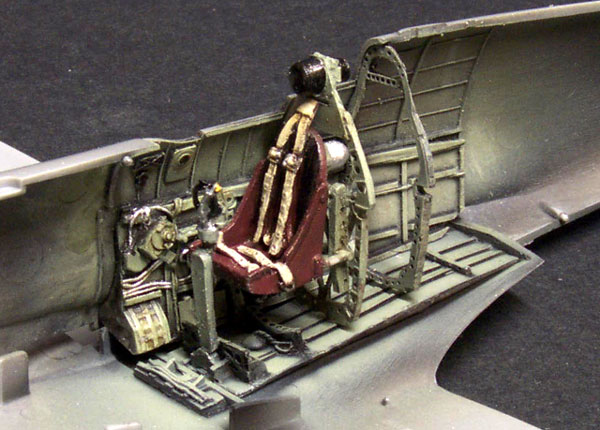

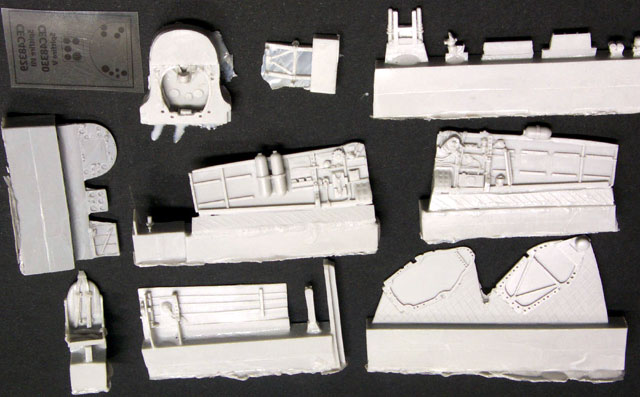
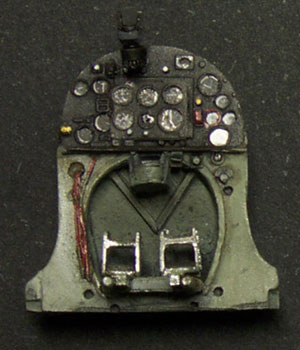 As usual, Cutting Edge supply the option of a painted
instrument panel or an acetate sandwich. This second option provides a small
sheet of clear acetate. The modeller paints the back of the instruments in
white paint, then glues the acetate sheet between the instrument panel and
the base.
As usual, Cutting Edge supply the option of a painted
instrument panel or an acetate sandwich. This second option provides a small
sheet of clear acetate. The modeller paints the back of the instruments in
white paint, then glues the acetate sheet between the instrument panel and
the base.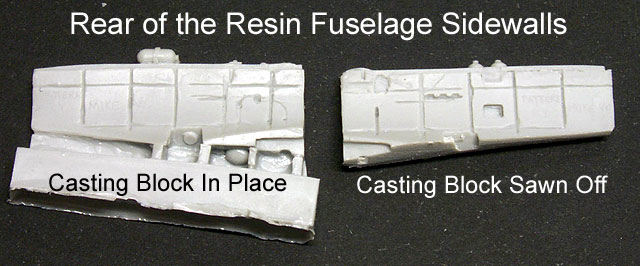
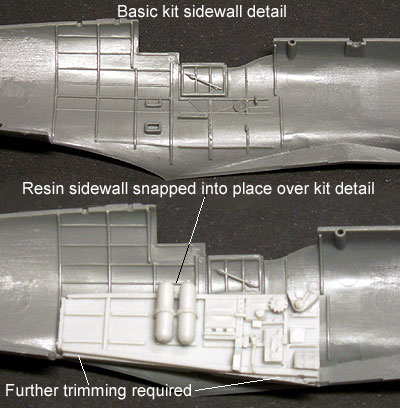 I
was a little sceptical when I read that these big resin blocks would simply
snap over the top of the kit sidewalls without the need to remove the raised
detail. However, that is exactly how it worked.
I
was a little sceptical when I read that these big resin blocks would simply
snap over the top of the kit sidewalls without the need to remove the raised
detail. However, that is exactly how it worked.